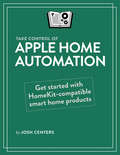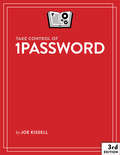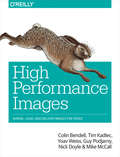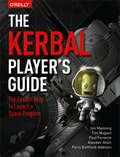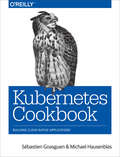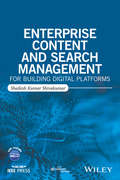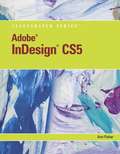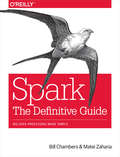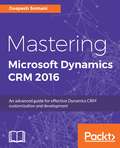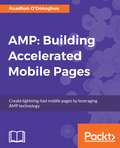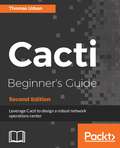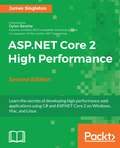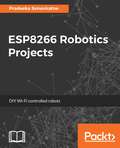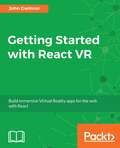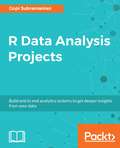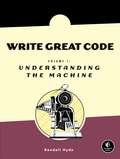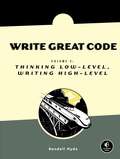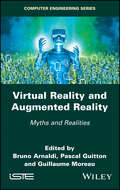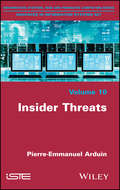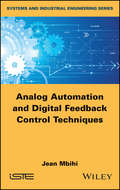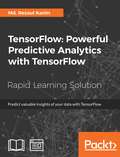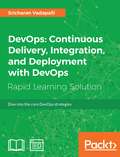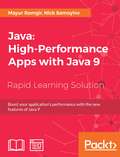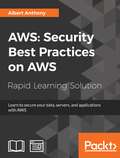- Table View
- List View
Take Control of Your Digital Photos (1.0)
by Jeff CarlsonThis book gives photographers using Mac or Windows computers the information they need to build and maintain a digital photo workflow that makes it easy to import, tag, rate, and store photos to find them quickly and easily later. It primarily covers macOS 10.12 Sierra or later, Windows 10, and iOS 10 or later. It helps you spend more time on the enjoyable aspects of photography—shooting and viewing your photos—and less on the mundane but essential task of managing all your photos.
Take Control of Apple Home Automation (1.0)
by Josh CentersThis book explains how to use Apple’s HomeKit home automation platform to control smart devices in your home, such as lights, outlets, thermostats, and more.
Take Control of 1Password (3.0)
by Joe KissellEasily create and enter secure passwords on all your devices! Wrangling your web passwords can be easy and secure, thanks to 1Password, the popular password manager from AgileBits. In this book, Joe Kissell brings years of real-world 1Password experience into play to explain not only how to create, edit, and enter web login data easily, but also how to autofill contact and credit card info when shopping online, audit your passwords and generate better ones, handle two-factor authentication (2FA), and sync and share passwords in various ways--including a hosted 1Password account (individual, family, or team), iCloud or Dropbox.While reading Take Control of 1Password on my iPad I was furiously highlighting passages and following along with 1Password open on my Mac. [The book] showed me how some of my passwords were weak or duplicates. I immediately changed those passwords to unique and secure ones.--Elisa Pacelli, in her MyMac book review (2nd Edition).The book focuses on 1Password 6 for the Mac, but it also provides details and directions for the iOS, Windows, and Android versions of 1Password. It briefly covers 1Password X, a chrome extension that brings 1Password to Chrome OS and Linux. Topics include: Meet 1Password: Set your master password, explore the various 1Password components, and decide on your ideal usage strategy. Master logins: In 1Password, a typical login contains a set of credentials used to sign in to a website. Find out how to create logins, sort them, search them, tag them, and more. You'll also find help with editing logins--for example, changing a password or adding further details. Understand password security: Get guidance on what makes for a good password, and read Joe's important Password Dos and Don'ts. A special topic covers how to perform a security audit in order to improve poor passwords quickly. Go beyond web logins: A primary point of 1Password is to speed up web logins, but 1Password can also store and autofill contact information (for more than one identity, even), along with credit card information. You'll also find advice on storing passwords for password-protected files and encrypted disk images, plus ideas for keeping track of confidential files, software licenses, scans of important cards or documents, and more.Sync your passwords: Discover which 1Password syncing solution is right for you: a hosted 1Password account, Dropbox, iCloud, a manually synced folder, or even device-to-device Wi-Fi sync.Share your passwords: Learn to store passwords in shared vaults within a family or team hosted account.You'll also discover the answers to key questions, including: What are my options for licensing 1Password? What are the differences between vaults in 1Password accounts and standalone vaults? Should I keep using my web browser's autofill feature? What about iCloud Keychain? Should I use that too? What can I do quickly to get better password security? How can I find and update weak passwords I created long ago?What should I do about security questions, like the name of my pet? How can 1Password provide a time-based one-time password (TOTP)? How do I use 1Password logins from utilities like LaunchBar?
High Performance Images: Shrink, Load, and Deliver Images for Speed
by Colin Bendell Guy Podjarny Mike Mccall Nick Doyle Tim Kadlec Yoav WeissHigh-quality images have an amazing power of attraction. Just add some stunning photos and graphics to your website or app and watch your user engagement and conversion numbers climb. It can be tricky, but with this practical guide, you’ll master the many facets of delivering high performance images on the internet—without adversely affecting site performance.You’ll learn the nuts and bolts of color theory, image formats, storage and management, operations delivery, browser and application behavior, the responsive web, and many other topics. Ideal for developers, this book also provides useful tips, tricks, and practical theory for processing and displaying powerful images that won’t slow down your online product.Explore digital image theory and the different formats availableDive into JPEGs, SVG and vector images, lossless compression, and other formatsUse techniques for downloading and rendering images in a browser, and for loading images on mobile devices and cellular networksExamine specific rendering techniques, such as lazy loading, image processing, image consolidation, and responsive imagesTake responsive images to the next level by using content negotiation between browser and server with the Client Hints HTTP standardLearn how to operationalize your image workflowContributors include Colin Bendell, Tim Kadlec, Yoav Weiss, Guy Podjarny, Nick Doyle, and Mike McCall from Akamai Technologies.
The Kerbal Player's Guide: The Easiest Way to Launch a Space Program
by Alasdair Allan Jon Manning Paris Buttfield-Addison Paul Fenwick Tim NugentKerbal Space Program (KSP) is a critically acclaimed, bestselling space flight simulator game. It’s making waves everywhere from mainstream media to the actual space flight industry, but it has a bit of a learning curve. In this book, five KSP nerds—including an astrophysicist—teach you everything you need to know to get a nation of tiny green people into space.KSP is incredibly realistic. When running your space program, you’ll have to consider delta-V budgets, orbital mechanics, Hohmann transfers, and more. This book is perfect for video game players, simulation game players, Minecrafters, and amateur astronomers.Design, launch, and fly interplanetary rocketsCapture an asteroid and fly it into a parking orbitTravel to distant planets and plant a flagBuild a moon rover, and jump off a crater ridgeRescue a crew-mate trapped in deep space
Kubernetes Cookbook: Building Cloud Native Applications
by Sébastien Goasguen Michael HausenblasKubernetes is becoming the de-facto standard for container orchestration and distributed applications management across a microservices framework. With this practical cookbook, you’ll learn hands-on recipes for automating the deployment, scaling, and operations of application containers across clusters of hosts.The book's easy-lookup problem-solution-discussion format helps you find the detailed answers you need—quickly. Kubernetes lets you deploy your applications quickly and predictably, so you can efficiently respond to customer demand. This cookbook, ideal for developers and system administers alike, provides the essential knowledge you need to get there. You’ll find recipes for :Kubernetes installation, Kubernetes API, API groups, Application primitives, Monitoring Troubleshooting
Enterprise Content and Search Management for Building Digital Platforms
by Shailesh Kumar ShivakumarProvides modern enterprises with the tools to create a robust digital platform utilizing proven best practices, practical models, and time-tested techniques Contemporary business organizations can either embrace the digital revolution—or be left behind. Enterprise Content and Search Management for Building Digital Platforms provides modern enterprises with the necessary tools to create a robust digital platform utilizing proven best practices, practical models, and time-tested techniques to compete in the today’s digital world. Features include comprehensive discussions on content strategy, content key performance indicators (KPIs), mobile-first strategy, content assessment models, various practical techniques and methodologies successfully used in real-world digital programs, relevant case studies, and more. Initial chapters cover core concepts of a content management system (CMS), including content strategy; CMS architecture, templates, and workflow; reference architectures, information architecture, taxonomy, and content metadata. Advanced CMS topics are then covered, with chapters on integration, content standards, digital asset management (DAM), document management, and content migration, evaluation, validation, maintenance, analytics, SEO, security, infrastructure, and performance. The basics of enterprise search technologies are explored next, and address enterprise search architecture, advanced search, operations, and governance. Final chapters then focus on enterprise program management and feature coverage of various concepts of digital program management and best practices—along with an illuminating end-to-end digital program case study. Comprehensive and cutting-edge, Enterprise Content and Search Management for Building Digital Platforms is an invaluable reference resource for creating an optimal enterprise digital eco-system to meet the challenges of today’s hyper-connected world.
Spark: Big Data Processing Made Simple
by Matei Zaharia Bill ChambersLearn how to use, deploy, and maintain Apache Spark with this comprehensive guide, written by the creators of the open-source cluster-computing framework. With an emphasis on improvements and new features in Spark 2.0, authors Bill Chambers and Matei Zaharia break down Spark topics into distinct sections, each with unique goals.You’ll explore the basic operations and common functions of Spark’s structured APIs, as well as Structured Streaming, a new high-level API for building end-to-end streaming applications. Developers and system administrators will learn the fundamentals of monitoring, tuning, and debugging Spark, and explore machine learning techniques and scenarios for employing MLlib, Spark’s scalable machine-learning library.Get a gentle overview of big data and SparkLearn about DataFrames, SQL, and Datasets—Spark’s core APIs—through worked examplesDive into Spark’s low-level APIs, RDDs, and execution of SQL and DataFramesUnderstand how Spark runs on a clusterDebug, monitor, and tune Spark clusters and applicationsLearn the power of Structured Streaming, Spark’s stream-processing engineLearn how you can apply MLlib to a variety of problems, including classification or recommendation
Mastering Microsoft Dynamics CRM 2016
by Deepesh SomaniThis comprehensive guide covers all the essential features of Dynamics CRM so you can build effective applications. About This Book • Harness the full power of Dynamics CRM 2016 through real-world scenarios • Create efficient client-side applications and customized plugins that work seamlessly across mobile and the Web • Get to know the best practices from field experience to utilize Dynamics CRM 2016 efficiently • Get an in-depth understanding of mobility and tablet options for Dynamics CRM 2016 Who This Book Is For This book is for those with Dynamics CRM knowledge who want to utilize the latest features available with Dynamics CRM 2016 and Update 1. Extensive Dynamics CRM development experience would be beneficial. What You Will Learn • Learn to manage the sales, service, and marketing divisions of any organization using entities and other Dynamics CRM 2016 customizations • Learn about the XRM framework of Dynamics CRM 2016 and leverage its features • Provide an enhanced mobile and tablet experience using the latest features of Dynamics CRM • Get an enhanced Dynamics CRM analytics experience with Word and Excel templates • Develop client-side applications using JavaScript and Web API • How to develop plugins and workflows using Dynamics CRM 2016 • Solution framework improvements, new field types, and Relevant Search in Dynamics CRM 2016 In Detail Microsoft Dynamics CRM is the most trusted name in enterprise-level customer relationship management. The latest version of Dynamics CRM 2016 comes with some exciting extra features guaranteed to make your life easier with Dynamics CRM. This book provides a comprehensive coverage of Dynamics CRM 2016 and helps you make your tasks much simpler while elevating you to the level of an expert. The book starts with a brief overview of the functional features and then introduces the latest features of Dynamics CRM 2016. You will learn to create Word and Excel templates, using CRM data that will enable you to provide customized data analysis for your organization. You will understand how to utilize Dynamics CRM as an XRM Framework, gain a deep understanding about client-side scripting in Dynamics CRM, and learn creating client-side applications using JavaScript and Web API. We then introduce visual control frameworks for Dynamics CRM 2016 mobile and tablet applications. Business Process Flows, Business Rules, and their enhancements are introduced. By the end of this book, you will have mastered utilizing Dynamics CRM 2016 features through real-world scenarios. Style and approach This book takes a practical, step-by-step approach, providing real-world case studies that enable readers to leverage the latest and most advanced features of Dynamics CRM.
AMP: Building Accelerated Mobile Pages
by Ruadhan O'DonoghueEngineer naturally lean web pages and leverage the latest web platform features to dramatically boost page speed About This Book • The first book for web developers that shows how to put AMP to work • Improve your website's mobile experience and get more traffic • Practical methods to achieve a step change in performance quickly and easily Who This Book Is For This book is for experienced web developers who are aware of the impact of slow-loading web pages on conversion rates and user engagement, and who are seeking to serve content to their end users in a rich and enticing way using the Accelerated Mobile Pages framework. You should be familiar with HTML5, CSS3, JavaScript, and JSON. What You Will Learn • Build, validate, and deploy AMP pages • Create interactive user notifications, navigation menus, accordions, contact pages with forms and maps • Monetize your traffic with a variety of ad styles and providers • Analyze your traffic by integrating analytics providers and tracking user-behavior along several dimensions • Embed social media with amp-youtube, amp-instagram, amp-twitter, and amp-facebook • Build e-commerce functionality including product pages and shopping carts • Deliver rich media experiences using AMP custom elements • Use advanced deployment techniques to extend functionality • Install ServiceWorkers and build Progressive Web Apps for offline use In Detail Google introduced the Accelerated Mobile Pages (AMP) project to give mobile users lightning-fast response times when accessing web pages on mobile devices. AMP delivers great user experiences by providing a framework for optimizing web pages that otherwise would take much longer to load on a mobile platform. This book shows how to solve page performance issues using the mobile web technologies available today. You will learn how to build instant-loading web pages, and have them featured more prominently on Google searches. If you want your website to succeed on mobile, if you care about SEO, and if you want to stay competitive, then this book is for you! You will go on a mobile web development journey that demonstrates with concrete examples how to build lightning-fast pages that will keep your visitors on-site and happy. This journey begins by showing how to build a simple blog article-style web page using AMP. As new concepts are introduced this page is gradually refined until you will have the skills and confidence to build a variety of rich and interactive mobile web pages. These will include e-commerce product pages, interactive forms and menus, maps and commenting systems, and even Progressive Web Apps. Style and approach Get step-by-step instructions to build web pages of different types, gain expert tricks to brand your pages without bloating them, and see methods to embed advertising.
Cacti Beginner's Guide: Leverage Cacti to design a robust network operations center
by Thomas Urban Glyn AstillKey Features A complete Cacti book that focuses on the basics as well as the advanced concepts you need to know for implementing a Network Operations Center A step-by-step Beginner's Guide with detailed instructions on how to create and implement custom plugins Written by Thomas Urban – creator of the “Cereus” and “NMID” plugins for Cacti known as Phalek in the Cacti forum Book Description Cacti is a performance measurement tool that provides easy methods and functions for gathering and graphing system data. You can use Cacti to develop a robust event management system that can alert on just about anything you would like it to. But to do that, you need to gain a solid understanding of the basics of Cacti, its plugin architecture, and automation concepts. Cacti Beginner's Guide will introduce you to the wide variety of features of Cacti and will guide you on how to use them for maximum effectiveness. Advanced topics such as the plugin architecture and Cacti automation using the command-line interface will help you build a professional performance measurement system. Designed as a beginner's guide, the book starts off with the basics of installing and using Cacti, and also covers the advanced topics that will show you how to customize and extend the core Cacti functionalities. The book offers essential tutorials for creating advanced graphs and using plugins to create enterprise-class reports to show your customers and colleagues. From data templates to input methods and plugin installation to creating your own customized plugins, this book provides you with a rich selection of step-by-step instructions to reach your goals. It covers all you need to know to implement professional performance measurement techniques with Cacti and ways to fully customize Cacti to fit your needs. You will also learn how to migrate Cacti to new servers. Lastly you will also be introduced to the latest feature of building a scalable remote poller environment. By the end of the book, you will be able to implement and extend Cacti to monitor, display, and report the performance of your network exactly the way you want. What you will learn Setting up Cacti on Linux and Windows systems Extending the core functionality by using the plugin architecture Building your own custom plugins Creating your own custom data input method to retrieve data from your systems Using SNMP, SSH, and WMI to retrieve remote performance data Designing and create enterprise-class reports with the reporting plugins Implementing threshold-based alerting using the Thold plugin Automating common administrative tasks utilizing the command-line interface and the automate functionality Migrating Cacti to new servers Building a multi remote-poller environment
ASP.NET Core 2 High Performance - Second Edition
by James SingletonThis book targets web application developers who have some experience with ASP.NET MVC—or another web application framework (such as Ruby on Rails or Django)—and who are interested in gaining experience with ASP.NET Core and C#. They are happy learning independently but struggle to discover what topics they should be researching
ESP8266 Robotics Projects
by Pradeeka SeneviratneBuild simple yet amazing robotics projects using ESP8266 About This Book • Get familiar with ESP8266 and its features. • Build Wi-FI controlled robots using ESP8266 • A project based book that will use the ESP8266 board and some of its popular variations to build robots. Who This Book Is For This book is targeted at enthusiasts who are interested in developing low-cost robotics projects using ESP8266. A basic knowledge of programming will be useful but everything you need to know is are covered in the book. What You Will Learn • Build a basic robot with the original ESP8266, Arduino UNO, and a motor driver board. • Make a Mini Round Robot with ESP8266 HUZZAH • Modify your Mini Round Robot by integrating encoders with motors • Use the Zumo chassis kit to build a line-following robot by connecting line sensors • Control your Romi Robot with Wiimote • Build a Mini Robot Rover chassis with a gripper and control it through Wi-Fi • Make a robot that can take pictures In Detail The ESP8266 Wi-Fi module is a self-contained SOC with an integrated TCP/IP protocol stack and can give any microcontroller access to your Wi-Fi network. It has a powerful processing and storage capability and also supports application hosting and Wi-Fi networking. This book is all about robotics projects based on the original ESP8266 microcontroller board and some variants of ESP8266 boards. It starts by showing all the necessary things that you need to build your development environment with basic hardware and software components. The book uses the original ESP8266 board and some variants such as the Adafruit HUZZAH ESP8266 and the Adafruit Feather HUZZAH ESP8266 . You will learn how to use different type of chassis kits, motors, motor drivers, power supplies, distribution boards, sensors, and actuators to build robotics projects that can be controlled via Wi-Fi. In addition, you will learn how to use line sensors, the ArduiCam, Wii Remote, wheel encoders, and the Gripper kit to build more specialized robots. By the end of this book, you will have built a Wi-Fi control robot using ESP8266. Style and approach A project-based guide that will help you build exciting robotics using ESP8266.
Getting Started with React VR
by John GwinnerCreate amazing 360 and virtual reality content that runs directly in your browsers with JavaScript and React VR 2.0 About This Book • A practical guide to developing virtual reality experiences targeting web and mobile browsers • Create customized 3D graphics for your virtual reality experiences with Three.js • Explore the ReactVR library to create objects that seem real and see how they move in the Virtual world • Import free models into VR and include those in your code Who This Book Is For This book is for web developers who want to use their existing skill set of HTML, CSS, and JavaScript to create virtual reality experiences. What You Will Learn • Use Blender 2.79 to make virtual reality objects for Web VR. • Import free models into VR and how to include those in your code • Build a Virtual Museum with interactive art pieces • Create your first VR App and customizing it • Build animations by procedurally changing an object's position, using timers and Animated APIs • Incorporate React Native code and JavaScript code in your VR world In Detail This book takes you on a journey to create intuitive and interactive Virtual Reality experiences by creating your first VR application using React VR 2.0.0. It starts by getting you up to speed with Virtual Reality (VR) and React VR components. It teaches you what Virtual Reality (VR) really is, why it works, how to describe 3D objects, the installation of Node.js (version 9.2.0) and WebVR browser. You will learn 3D polygon modeling, texturing, animating virtual objects and adding sound to your VR world. You will also discover ways to extend React VR with new features and native Three.js. You will learn how to include existing high-performance web code into your VR app. This book will also take you through upgrading and publishing your app. By the end of this book, you'll have a deep knowledge of Virtual Reality and a full-fledged working VR app to add to your profile! Style and approach A step-by-step practical guide to help readers build their first VR application.
R Data Analysis Projects
by Gopi SubramanianGet valuable insights from your data by building data analysis systems from scratch with R. About This Book • A handy guide to take your understanding of data analysis with R to the next level • Real-world projects that focus on problems in finance, network analysis, social media, and more • From data manipulation to analysis to visualization in R, this book will teach you everything you need to know about building end-to-end data analysis pipelines using R Who This Book Is For If you are looking for a book that takes you all the way through the practical application of advanced and effective analytics methodologies in R, then this is the book for you. A fundamental understanding of R and the basic concepts of data analysis is all you need to get started with this book. What You Will Learn • Build end-to-end predictive analytics systems in R • Build an experimental design to gather your own data and conduct analysis • Build a recommender system from scratch using different approaches • Use and leverage RShiny to build reactive programming applications • Build systems for varied domains including market research, network analysis, social media analysis, and more • Explore various R Packages such as RShiny, ggplot, recommenderlab, dplyr, and find out how to use them effectively • Communicate modeling results using Shiny Dashboards • Perform multi-variate time-series analysis prediction, supplemented with sensitivity analysis and risk modeling In Detail R offers a large variety of packages and libraries for fast and accurate data analysis and visualization. As a result, it's one of the most popularly used languages by data scientists and analysts, or anyone who wants to perform data analysis. This book will demonstrate how you can put to use your existing knowledge of data analysis in R to build highly efficient, end-to-end data analysis pipelines without any hassle. You'll start by building a content-based recommendation system, followed by building a project on sentiment analysis with tweets. You'll implement time-series modeling for anomaly detection, and understand cluster analysis of streaming data. You'll work through projects on performing efficient market data research, building recommendation systems, and analyzing networks accurately, all provided with easy to follow codes. With the help of these real-world projects, you'll get a better understanding of the challenges faced when building data analysis pipelines, and see how you can overcome them without compromising on the efficiency or accuracy of your systems. The book covers some popularly used R packages such as dplyr, ggplot2, RShiny, and others, and includes tips on using them effectively. By the end of this book, you'll have a better understanding of data analysis with R, and be able to put your knowledge to practical use without any hassle. Style and approach This book takes a unique, learn-as-you-do approach, as you build on your understanding of data analysis progressively with each project. This book is designed in a way that implementing each project will empower you with a unique skill set, and enable you to implement the next project more confidently.
Write Great Code, Volume 1: Understanding the Machine
by Randall HydeToday's programmers are often narrowly trained because the industry moves too fast. That's where Write Great Code, Volume 1: Understanding the Machine comes in. This, the first of four volumes by author Randall Hyde, teaches important concepts of machine organization in a language-independent fashion, giving programmers what they need to know to write great code in any language, without the usual overhead of learning assembly language to master this topic. A solid foundation in software engineering, The Write Great Code series will help programmers make wiser choices with respect to programming statements and data types when writing software.
Write Great Code, Volume 2: Thinking Low-Level, Writing High-Level
by Randall HydeIt's a critical lesson that today's computer science students aren't always being taught: How to carefully choose their high-level language statements to produce efficient code. Write Great Code, Volume 2: Thinking Low-Level, Writing High-Level shows software engineers what too many college and university courses don't - how compilers translate high-level language statements and data structures into machine code. Armed with this knowledge, they will make informed choices concerning the use of those high-level structures and help the compiler produce far better machine code - all without having to give up the productivity and portability benefits of using a high-level language.
Virtual Reality and Augmented Reality: Myths and Realities
by Bruno Arnaldi Pascal Guitton Guillaume MoreauVirtual and Augmented Reality have existed for a long time but were stuck to the research world or to some large manufacturing companies. With the appearance of low-cost devices, it is expected a number of new applications, including for the general audience. This book aims at making a statement about those novelties as well as distinguishing them from the complexes challenges they raise by proposing real use cases, replacing those recent evolutions through the VR/AR dynamic and by providing some perspective for the years to come.
Insider Threats: Insider Threats
by Pierre-Emmanuel ArduinAn information system may be regarded as an organized set of resources, both technological and human. Security should take this specificity into consideration in order to ensure an overall security of information systems. The security of information systems is usually tackled in a technological perspective. This book proposes to focus not only on information systems' security in a technological perspective, but also in a human, managerial and organizational perspective.
Analog Automation and Digital Feedback Control Techniques
by Jean MbihiThis book covers various modern theoretical, technical, practical and technological aspects of computerized numerical control and control systems of deterministic and stochastic dynamical processes.
TensorFlow: Predict valuable insights of your data with TensorFlow
by Md. Rezaul KarimLearn how to solve real life problems using different methods like logic regression, random forests and SVM’s with TensorFlow.Key FeaturesUnderstand predictive analytics along with its challenges and best practices Embedded with assessments that will help you revise the concepts you have learned in this bookBook DescriptionPredictive analytics discovers hidden patterns from structured and unstructured data for automated decision making in business intelligence. Predictive decisions are becoming a huge trend worldwide, catering to wide industry sectors by predicting which decisions are more likely to give maximum results. TensorFlow, Google’s brainchild, is immensely popular and extensively used for predictive analysis.This book is a quick learning guide on all the three types of machine learning, that is, supervised, unsupervised, and reinforcement learning with TensorFlow. This book will teach you predictive analytics for high-dimensional and sequence data. In particular, you will learn the linear regression model for regression analysis. You will also learn how to use regression for predicting continuous values. You will learn supervised learning algorithms for predictive analytics. You will explore unsupervised learning and clustering using K-meansYou will then learn how to predict neighborhoods using K-means, and then, see another example of clustering audio clips based on their audio features. This book is ideal for developers, data analysts, machine learning practitioners, and deep learning enthusiasts who want to build powerful, robust, and accurate predictive models with the power of TensorFlow. This book is embedded with useful assessments that will help you revise the concepts you have learned in this book.What you will learnLearn TensorFlow features in a real-life problem, followed by detailed TensorFlow installation and configurationExplore computation graphs, data, and programming models also get an insight into an example of implementing linear regression model for predictive analyticsSolve the Titanic survival problem using logistic regression, random forests, and SVMs for predictive analyticsDig deeper into predictive analytics and find out how to take advantage of it to cluster records belonging to the certain group or class for a dataset of unsupervised observationsLearn several examples of how to apply reinforcement learning algorithms for developing predictive models on real-life datasetsWho this book is forThis book is aimed at developers, data analysts, machine learning practitioners, and deep learning enthusiasts who want to build powerful, robust, and accurate predictive models with the power of TensorFlow.
DevOps: Dive into the core DevOps strategies
by Sricharan VadapalliExplore the high-in demand core DevOps strategies with powerful DevOps tools such as Ansible, Jenkins, and ChefKey Features●Get acquainted with methodologies and tools of the DevOps framework ●Perform continuous integration, delivery, deployment, and monitoring using DevOps tools●Explore popular tools such as Git, Jenkins, Maven, Gerrit, Nexus, Selenium, and so on●Embedded with assessments that will help you revise the concepts you have learned in this bookBook DescriptionDevOps is the most widely used software engineering culture and practice that aim sat software development and operation. Continuous integration is a cornerstone technique of DevOps that merges software code updates from developers into a shared central mainline.This book takes a practical approach and covers the tools and strategies of DevOps. It starts with familiarizing you with DevOps framework and then shows how toper form continuous delivery, integration, and deployment with DevOps. You will explore DevOps process maturity frameworks and progression models with checklist templates for each phase of DevOps. You will also be familiar with agile terminology, methodology, and the benefits accrued by an organization by adopting it. You will also get acquainted with popular tools such as Git, Jenkins ,Maven, Gerrit, Nexus, Selenium, and so on.You will learn configuration, automation, and the implementation of infrastructure automation (Infrastructure as Code) with tools such as Chef and Ansible.This book is ideal for engineers, architects, and developers, who wish to learn the core strategies of DevOps.What you will learn●Get familiar with life cycle models, maturity states, progression and best practices of DevOps frameworks●Learn to set up Jenkins and integrate it with Git●Know how to build jobs and perform testing with Jenkins●Implement infrastructure automation (Infrastructure as Code) with tools such as Chef and Ansible●Understand continuous monitoring process with tools such as Splunk and Nagios●Learn how Splunk improves the code qualityWho this book is forThis book is for engineers, architects, and developers, who wish to learn the core strategies of DevOps.
Java: Boost your application’s performance with the new features of Java 9
by Mayur RamgirOptimize the powerful techniques of Java 9 to boost your application's performanceKey Features Tackle all kinds of performance-related issues and streamline your development Dive into the new features of Java 9 Implement highly efficient and reliable codes with the help of new APIs of Java Embedded with assessments that will help you revise the concepts you have learned in this bookBook DescriptionJava 9 which is one of the most popular application development languages. The latest released version Java 9 comes with a host of new features and new APIs with lots of ready to use components to build efficient and scalable applications. Streams, parallel and asynchronous processing, multithreading, JSON support, reactive programming, and microservices comprise the hallmark of modern programming and are now fully integrated into the JDK. This book focuses on providing quick, practical solutions to enhance your application's performance. You will explore the new features, APIs, and various tools added in Java 9 that help to speed up the development process. You will learn about jshell, Ahead-of-Time (AOT) compilation, and the basic threads related topics including sizing and synchronization. You will also explore various strategies for building microservices including container-less, self-contained, and in-container. This book is ideal for developers who would like to build reliable and high-performance applications with Java. This book is embedded with useful assessments that will help you revise the concepts you have learned in this book.What you will learn Familiarize with modular development and its impact on performance Learn various string-related performance improvements, including compact string and modify string concatenation Explore various underlying compiler improvements, such as tiered attribution and Ahead-of-Time (AOT) compilation Learn security manager improvements Understand enhancements in graphics rasterizers Use of command-line tools to speed up application development Learn how to implement multithreading and reactive programming Build microservices in Java 9 Implement APIs to improve application codeWho this book is forThis book is targeted at developers who would like to build reliable and high-performance applications with Java.
AWS: Learn to secure your data, servers, and applications with AWS
by Albert AnthonyDelve deep into various security aspects of AWS to build and maintain a secured environmentKey Features●Learn to secure your network, infrastructure, data, and applications in AWS cloud●Use AWS managed security services to automate security●Dive deep into various aspects such as the security model, compliance, access management and much more to build and maintain a secured environment●Explore Cloud Adoption Framework (CAF) and its components●Embedded with assessments that will help you revise the concepts you have learned in this bookBook DescriptionWith organizations moving their workloads, applications, and infrastructure to the cloud at an unprecedented pace, security of all these resources has been a paradigm shift for all those who are responsible for security; experts, novices, and apprentices alike.This book focuses on using native AWS security features and managed AWS services to help you achieve continuous security. Starting with an introduction to Virtual Private Cloud (VPC) to secure your AWS VPC, you will quickly explore various components that make up VPC such as subnets, security groups, various gateways, and many more.You will also learn to protect data in the AWS platform for various AWS services by encrypting and decrypting data in AWS. You will also learn to secure web and mobile applications in AWS cloud.This book is ideal for all IT professionals, system administrators, security analysts, solution architects, and chief information security officers who are responsible for securing workloads in AWS for their organizations.This book is embedded with useful assessments that will help you revise the concepts you have learned in this book.What you will learn●Get familiar with VPC components, features, and benefits●Learn to create and secure your private network in AWS●Explore encryption and decryption fundamentals●Understand monitoring, logging, and auditing in AWS●Ensure data security in AWS●Secure your web and mobile applications in AWS●Learn security best practices for IAM, VPC, shared security responsibility model, and so onWho this book is forThis book is for all IT professionals, system administrators, security analysts, solution architects, and chief information security officers who are responsible for securing workloads in AWS for their organizations.

